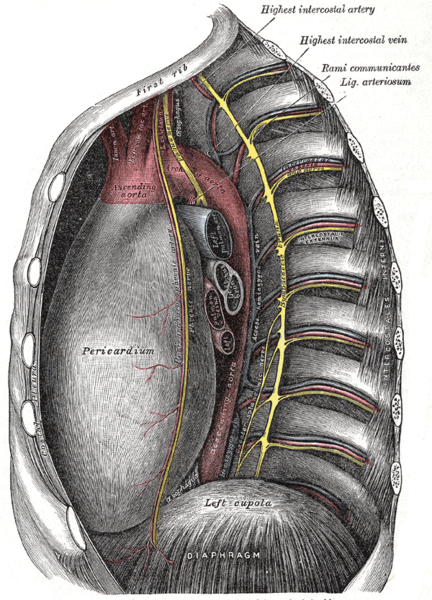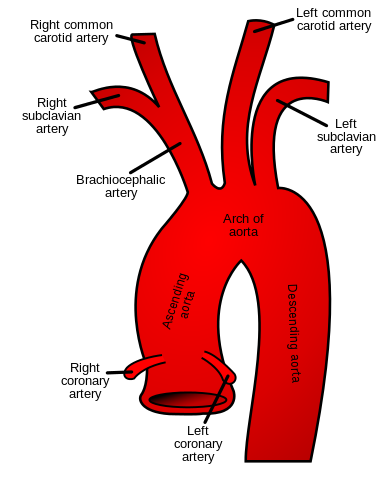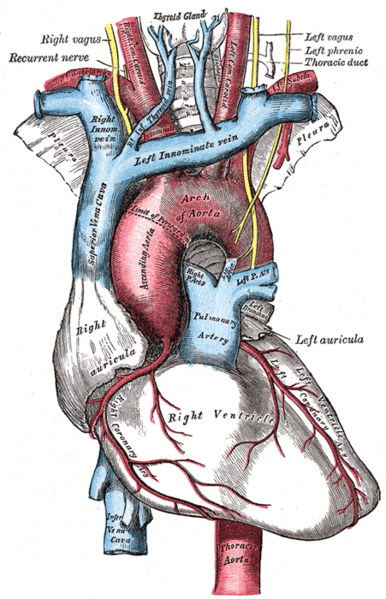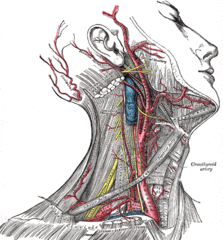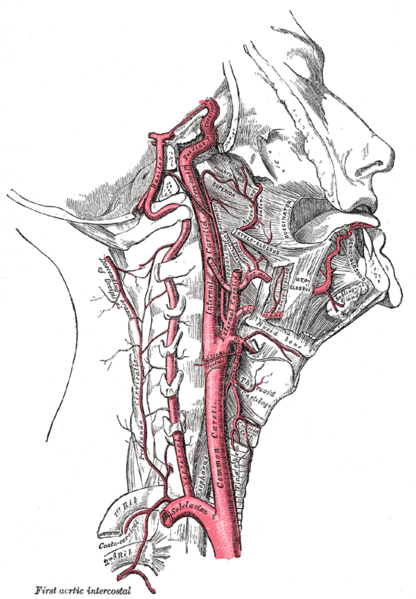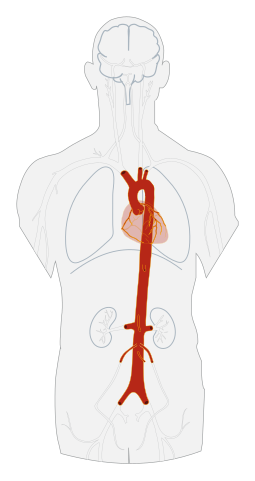After the oxygenated blood comes through the abdominal aorta it splits into 10 smaller arteries.
One of those is called the iliac artery which then continues to the femoral artery.
This is a big artery that runs right down the inside of your thigh.
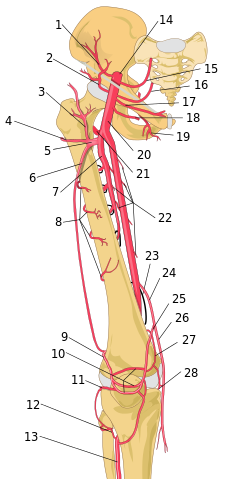
(from: wikipedia - femoral artery)
Kid Facts - Blast from the past: Pharynx

